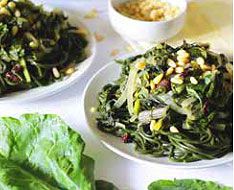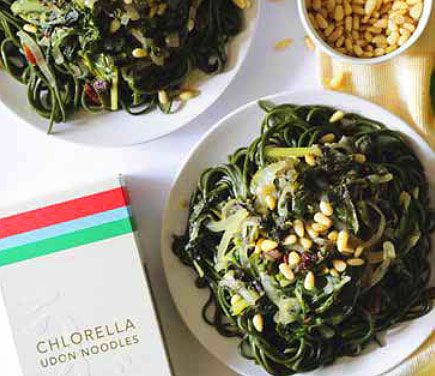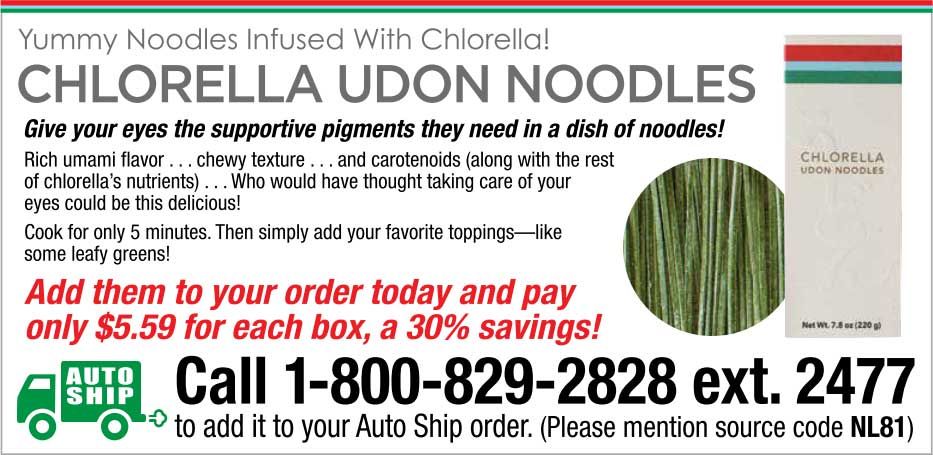

The Secret To Incredible Eye Health In Fall Foliage
Before you read too much further, think about this:
Right now as you are reading this sentence, you’re using perhaps one of the most important abilities we have for our survival... our pleasure... our personal and collective evolution...
The power of sight.
Our eyes open our world to us and guide us through it. They help us communicate. We not only read words... we also collect body language cues... monitor facial expressions... assess people’s appearance and more.
We use them to evaluate our environment so we can make decisions to safely get through it.
We use them to acquire new skills and hone old ones.
And we use them to enjoy the beauty of life. We soak in our loved ones’ faces... we take in the immensity and grandeur of the ocean and desert... our eyes even trigger the release of hormones that start our mouths watering when we see a good meal in front of us.
Our eyes give us so much life...
So it only makes sense that we take care of them. Supporting their overall health regardless of our age.
Well guess what? A major clue to how you can do this is right in front of your eyes this fall. Take a gander at the riotous display of orange, yellow and red foliage this season. The colors your eyes are feasting on are made by the exact same pigments your eyes need to continue working well.
How’s that for an interesting twist!
The pigments revealed in fall leaves as the green chlorophyll degrades with the change in light are the same pigments our eyes need to thrive. Members of the 600-strong carotenoid family, these pigments – lutein, zeaxanthin, alpha-carotene and beta-carotene – literally allow you to see.
But before you go out and start munching on some maple leaves, there’s a more delicious way to get these pigments in your digestive tract so they can help your eyes.
Here’s the full scoop...
The Carotenoids In Nature
The vibrant orange in the leaves is made by the same pigments in carrots and Halloween pumpkins – beta-carotene and alpha-carotene. And those brilliant golds and yellows in fall foliage? You’re looking at lutein and zeaxanthin, two other important eye health pigments. All four of these pigments also hide out in leafy greens like spinach, chard, kale, turnip greens and collard greens.
In plants
-
They help with photosynthesis. At specific light wavelengths, they can absorb light energy more efficiently than chlorophyll. They then transfer this light energy to the chlorophyll.
-
They help protect the plant tissue from the free radicals that are an unavoidable part of photosynthesis. 1
-
Lutein and zeaxanthin help leaves disperse excess light energy as heat. 2
As you’ll see, these same qualities – translating light into energy or signals and protecting tissue – may also indicate supporting the health of our eyes.
Turning The Carotenes' Light Power To Support Eye Health
After you eat a carrot or a bowl of spinach and start digesting it, your small intestines transform the alpha- and beta-carotene into vitamin A. Extensive clinical research has shown that this vitamin not only helps your immune system and keeps your cells reproducing properly, but it also plays an important role in eye health.
Researchers are still trying to zone in on exactly how it works in your eyes, but a few things are clear:
 Long ago in evolutionary history, vitamin A bonded with bacterial proteins to help them orient to light so they could harvest the energy from the sun. Billions of years later, vitamin A’s affinity for light continues to work in your body... .
Long ago in evolutionary history, vitamin A bonded with bacterial proteins to help them orient to light so they could harvest the energy from the sun. Billions of years later, vitamin A’s affinity for light continues to work in your body... .
Your body binds vitamin A to proteins called opsins. These proteins convert light into a signal that can be read by your brain. 3 Without enough of these proteins your brain cannot “read” visual cues from light.
Severe vitamin A deficiency is almost exclusively a problem in developing countries. Yet, while most of us in the U.S. don’t face this risk, we can better understand vitamin A’s role in eyesight by looking at the tragic examples from poorer countries where this is an ongoing issue. Every year an estimated 250,000 to 500,000 children in developing countries go blind due to vitamin A deficiency. 4 Low vitamin A levels have also been implicated in night blindness, deterioration of the cornea, retinopathy and dry eye.
Fortunately, as the World Health Organization has underscored, supplementing with vitamin A can reverse these problems. 5 In this one case, a man who had developed night blindness from a vitamin A deficiency caused by digestive dysfunction was able to resume driving at night within just 2 months thanks to vitamin A supplementation. 6
Vitamin A and beta-carotene may also be particularly critical in preserving our vision as we age. The largescale NIH-sponsored Age-Related Eye Disease Study (AREDS) indicated that supplementation with beta-carotene in combination with vitamin C, E, zinc and copper over 5 years could drop your risk for age-related eye problems by 25%. 7
Dietary Beta-Carotene Is The Best!
Despite the overall positive findings in the AREDS study, a subset of results in this study raised a big red flag about beta-carotene. It seemed that this same nutrient may increase smokers’ risk for lung cancer.
However, as natural health expert Dr. Andrew Weil explains, while it’s important to take this into consideration if you smoke, this may not be the case if you get beta-carotene through your diet. 8 There is a distinct difference in how the body uses beta-carotene from whole food sources vs. the synthesized beta-carotene used in the study.
-
The body only transforms enough beta-carotene from food to make the retinol or vitamin A it needs.
-
In addition, nutrients found with beta-carotene in foods also help balance its impact on the body, eliminating this risk. 9
That being said, getting enough dietary beta-carotene to get enough vitamin A for your eyes requires some effort. It takes 12 micrograms of beta-carotene to make 1 microgram of vitamin A. 10 In other words, you need to eat a lot of leafy greens and carrots to get the vitamin A your body needs. For this reason, some nutritionists recommend getting some of your vitamin A from animal sources where its already been converted into the bioavailable vitamin A – like eggs, grassfed dairy products and liver.
But this step is not necessary if you’re conscientious about it. In Nepal vitamin A deficiency is a common health issue. However, when Nepalese women suffering from night blindness caused by a vitamin A deficiency consumed cooked carrots, amaranth leaf, vitamin-A-fortified rice or goat liver over the course of 6 weeks, researchers found that all four groups recovered their ability to see in low-light conditions. 11
Lutein And Zeaxanthin For Your Retina
While vitamin A clearly forms a critical role in eye health, the precursor pigments alpha- and beta-carotene don’t go to the eye itself. They are transformed in the digestive tract into vitamin A.
However with lutein and zeaxanthin that is not the case. These pigments go right to the eye unchanged – in their pure, raw state. Of the 600 different carotenoids in nature, only lutein and zeaxanthin accumulate in the retina of the eye. 12 They build up in the center of the retina in an oval-shaped area called the macula.
And there is a reason for this.

The retina is the light sensitive tissue lining the interior of your eye. At the center of your eye, in the back, right above the optic nerve entry point is a yellow oval where these pigments build up. This is called the macula.
Considered the functional center of the retina, the macula transforms the light coming into your eye into an image which is then transported to the brain along the optic nerve. Thanks to the macula, you can have 20/20 vision. While the retina enables us to see peripherally, the macula allows us to focus on objects. It allows us to read and see things in great detail. Some scientists consider the sophisticated vision we gain from the macula to be one of the characteristics that distinguishes humans and other higher primates. 13 14
-
Extensive research on lutein and zeaxanthin and macula health indicates these pigments supporting macular health. Think about all the free radicals your eye is exposed to as light pours into it. These pigments help your eye absorb these destructive molecules, helping to maintain the overall health of our retina.
-
Further research has also shown these two pigments may help filter out blue light. 15 Blue light is a normal healthy part of the light spectrum. However, these days, with our attachment to digital devices, we’re exposing ourselves to more of this part of the light spectrum than humans ever were before. And it may cause occasional eye strain.
Lutein and zeaxanthin have been shown to absorb blue light and limit the amount getting through to the light sensitive tissue behind the macula. For this reason, in today’s digital age, we may need these two pigments even more than ever for eye health.
But they don’t only serve to support your eye.
Lutein and zeaxanthin also seem to help you see better. A team of Irish researchers demonstrated that by increasing the body’s supply of these pigments (along with a third called meso-zeaxanthin) may help with visual acuity. After a year of supplementation, the participants were able to distinguish the edges of objects much better with their sight than before. 16
Lutein and zeaxanthin can help maintain visual acuity today and well into the future. In fact, they are so important for your vision, the American Optometric Association reports that simply by measuring the density of these pigments in your macula, you can gain a pretty good insight into your eye health for the future.17
Get These Pigments In Your Diet
Nutrition is a powerful way to keep your eyes healthy... In 2008, according to a study published in the American Journal of Ophthalmology, simply by eating greens like kale and collards once per month, women decreased their chance of having eye problems later in life by 69% !18
If you’re taking chlorella regularly, you’re already ahead of the game.
Chlorella also gives you 45 mcg of beta-carotene and 189 mcg of alpha-carotene, both precursors for vitamin A. Thanks to this, you’re getting 5% of the recommended daily allowance for vitamin A.
 Based on clinical research, American Optometric Association recommends 10 mg per day of lutein and 2 mg per day of zeaxanthin to keep your eyes healthy. 19 When it comes to lutein, chlorella is a powerhouse. For every 3 grams of Sun Chlorella you get 3 mg of lutein.
Based on clinical research, American Optometric Association recommends 10 mg per day of lutein and 2 mg per day of zeaxanthin to keep your eyes healthy. 19 When it comes to lutein, chlorella is a powerhouse. For every 3 grams of Sun Chlorella you get 3 mg of lutein.
Chlorella does not have zeaxanthin. But simply by adding some leafy greens like chard, spinach or kale to your daily menu, you can easily get enough of this important nutrient – not to mention the other eye-healthy nutrients you need.
Raw kale outpaces all other greens in its concentration of these two carotenoids at 23.7 mg of lutein and zeaxanthin per cup cooked, followed by spinach at 20.4 mg and swiss chard 19.3 mg. 20Combine some of these greens with some chunks of steamed squash and serve them over a bowl of chlorella udon noodles (see this newsletter’s recipe) – and you have a literal feast for your eyes!
Making The Most Of Your Carotenoids
You can get the carotenoids you need for good eye health from your diet. In fact, not only are dietary sources of these nutrients sufficient – they’re safer and better than isolated, synthetic supplements.
So if you are taking chlorella regularly and eating a good amount of vegetables like leafy greens and carrots, you’re golden when it comes to these pigments.
That being said, there are certain things you can do in preparing your foods to ensure you get most out of these pigments...
-
Eat carotenoids with fats. Fat helps with the absorption of these nutrients. So, if you’re having a salad with spinach, make sure you include oil in the dressing. If you’re cooking up some carrots or chard, add a pat of butter.
-
Cook’em. In plants, carotenoids are bound to proteins, making them hard for your body to access. Cooking helps destroy these bonds, making the carotenoids much more bioavailable to your body.
-
If you don’t cook’em, mash’em or puree’em. If you want to enjoy them raw, but still get more nutrition out of them, mash them up. Processing carotenoid-rich vegetables also helps to break down the plant matrix, making them easier to access. So toss your spinach in a smoothie. Or chop up that kale and knead it with your hands a little before dressing it for a salad.
Want a delicious and nourishing fall dish that makes the most of these foods? Try this:

Chlorella Udon Noodles with Swiss Chard
-
Cook a packet of chlorella udon noodles according to instructions.
-
Chop one onion and caramelize it in olive oil. To caramelize the onion, cook it over low heat until the onion is wilted and brown (about 15 minutes).
-
Add 2 pounds of chopped Swiss chard (stems and leaves) along with 3 cloves chopped garlic, black pepper and ¼ c. raisins. Saute for a couple minutes and then cover the pan and braise the chard for 15-20 minutes until soft.
-
Add a tablespoon of lemon juice and a dash of fish sauce or soy sauce to your taste.
-
Add the udon noodles to the pan to combine all ingredients. Then remove from the pan.
-
Sprinkle with toasted pine nuts and serve.

The Impact of Computer Vision Syndrome
It’s just common sense – we weren’t meant to sit hunched over, staring at a screen all day. And yet, here we are, glued to our digital devices for hours at a time – an experiment never before performed in human history.
The emerging complex of problems associated with spending all this time on our digital devices has been given a name – computer vision syndrome (CVS).
And its impact?

We’re just starting to find out. And so far, it’s not looking too good.
Eye pain... headaches... blurred vision... dry eye... neck and shoulder pain... these are the most immediate symptoms associated with too much screen time. As to the long term consequences, health experts can only speculate the full extent...
“Given the increasing accessibility of cell phones, tablets, computers and more for both education and recreation, we as healthcare providers have to be prepared for a rising tide of significant unintended consequences we don’t fully understand,” writes Bill Hefner, OD, MEd in his 2-credit course for eye care professionals on CVS, offered by the Optometric Study Center. 21
CVS is created by a number of factors:
-
Sitting at a desk puts a strain on your neck, back and shoulders.
-
Focusing on a screen an arm-length away can strain your eye muscles.
-
And finally, exposing your eyes to this much blue light at a time may have untold consequences.
Ordinarily blue light exposure is not such a bad thing. Found in the 380nm to 500nm range, high energy visible blue light is a normal and healthy part of the light we’re exposed to from the sun. This blue-violet part of the spectrum seems to help prevent myopia22 , speed wound healing23 , maintain skin health and set your circadian rhythm . 24
But when we get too much of it, our bodies may suffer... Research indicates this overexposure may be disrupting our sleep cycle, and consequently contributing to insulin resistance, hypertension and even cancer. Specifically when it comes to the eye, blue light overexposure is implicated in retinal damage and decreased visual acuity, possibly linked to oxidative stress. 25
Simple Moves To Combat CVS
So what can you do about this?
-
Well the first thing is to simply try to limit your time with digital devices. Not only will this help cut down the risk of developing CVS, but a growing body of research indicates this can help your memory, mood, productivity, relationships and more.
But even if you can cut down significantly, it still may be hard to eliminate your risk for CVS. We use our devices for work, learning and play. They are embedded in our life.
So in addition to reducing screen time, here are some other measures you can take:
-
Use the 20-20-20 rule recommended by the American Optometric Association. Every 20 minutes, spend 20 seconds focusing on something at least 20 feet away. This gives your eyes a break from always focusing on that near object, allowing the ciliary muscles in your eyes to relax.
-
Get up and move. Movement will alleviate the stiffness you can develop in your neck, shoulders and back from sitting for long periods at a time. Exercise also gets the blood flowing, reinvigorating your whole body. Finally, exercise can also boost growth hormone levels. When it comes to your eyes, this can help to protect them from UV light and keep your retina functioning well.
-
Eat to protect your eyes. As the main article in this issue explains, pigments found in leafy greens, squash and carrots as well as grass-fed dairy products and eggs can protect your eyes. Another carotenoid, astaxanthin which is found in shrimp and salmon, seems to help sustain your eyes’ ciliary muscles. Getting enough omega-3 fatty acids can not only optimize your body’s absorption of these pigments but also may help alleviate the dry eye associated with CVS. National Institution of Health (NIH) suggests that the adequate intake for Omega-3 for male adult is 1.6g, and 1.1g for female adult.

1 On the Hidden Colors In Fall Leaves: What Are The Functions Of Those Yellow And Orange Pigments We See In Fall. Appalachian State University, Department of Biology website. Viewed 10/3/18 at https://biology.appstate.edu/fall-colors/hidden-colors-leaves-what-are-functions-those-yellow-and-orange-pigments-we-see-fall
2Appalachian State University, Department of Biology.
3Carotenoid Oxygenase. European Bioinformatics Institute website. Viewed 10/3/18 at https://www.ebi.ac.uk/interpro/potm/2005_6/Page2.htm
4Maron, DF. Fact Or Fiction: Carrots Improve Your Vision. Scientific American, June 23, 2014.
5Xerophthalmia and night blindness for the assessment of clinical vitamin A deficiency in individuals and populations. World Health Organization, 2014.
6Privett B et al. Vitamin A Deficiency and Nyctalopia: 55-year-old man with gradual onset of night blindness. 2/22/2011. University of Iowa Health Sciences Ophthalmology and Visual Sciences website. Viewed 10/2/18 at http://webeye.ophth.uiowa.edu/eyeforum/cases/130-vitamin-a-deficiency.htm
7Vitamin A: Fact Sheet For Health Professionals. National Institutes of Health Offices of Dietary Supplement website. Viewed 10/3/ 18 at https://ods.od.nih.gov/factsheets/VitaminA-HealthProfessional/
8Weil A et al. What is Beta Carotene. September 2012. Viewed 10/2/18 at https://www.drweil.com/vitamins-supplements-herbs/vitamins/beta-carotene/
9Vitamin A: Fact Sheet For Health Professionals. National Institutes of Health Offices of Dietary Supplement website. Viewed 10/3/ 18 at https://ods.od.nih.gov/factsheets/VitaminA-HealthProfessional/
10Engel P. Sources of Beta-Carotene. Nutri-Facts website. 2010. Viewed 10/2/18 at https://www.nutri-facts.org/en_US/nutrients/carotenoids/beta-carotene/sources.html
11Haskell MJ et al. Recovery from impaired dark adaptation in nightblind pregnant Nepali women who receive small daily doses of vitamin A as amaranth leaves, carrots, goat liver, vitamin A–fortified rice, or retinyl palmitate, The American Journal of Clinical Nutrition, Volume 81, Issue 2, 1 February 2005, Pages 461–471.
12Lutein and Zeaxanthin. American Optometric Website. Viewed 10/2/18 at https://www.aoa.org/patients-and-public/caring-for-your-vision/diet-and-nutrition/lutein
13Pennesi, Mark E et al. “Animal models of age related macular degeneration” Molecular aspects of medicine vol. 33,4 (2012): 487-509.
14Sebag J. What is the Macula. Vitreous Macula Retina Institute. Viewed 10/3/18 at https://www.vmrinstitute.com/what-is-the-macula/
15Study Finds Lutein And Zeaxanthin Protect Against Blue Light Exposure. Nutraceuticals World. September 2017. Viewed 7/20/18 at https://www.nutraceuticalsworld.com/issues/2017-09/view_breaking-news/study-finds-lutein-and-zeaxanthin-protect-against-blue-light-exposure/1191
16Schultz H. Study shows 3 carotenoid formula boosts visual performance for non-impaired subjects. Nutraingedients. July 14, 2016.
17Lutein and Zeaxanthin. American Optometric Website.
18Coleman AL et al.Glaucoma Risk and the Consumption of Fruits and Vegetables Among Older Women in the Study of Osteoporotic Fractures. American Journal of Ophthalmology , Volume 145 , Issue 6 , 1081 - 1089
19Lutein and Zeaxanthin. American Optometric Website.
20Whitbread D. Top 10 Foods Highest In Lutein And Zeaxanthin. My Food Data website. Viewed 10/2/18 at https://www.myfooddata.com/articles/high-lutein-and-zeaxanthin-foods.php
21Hefner 2018
22Torii H et al. Violet Light Exposure Can Be a Preventive Strategy Against Myopia Progression. EBioMedicine. 2017;15:210-219.
23Hefner B. Warding Off The Blues. Optometric Study Center. June 16, 2018.
24Hefner 2018
25Hefner 2018